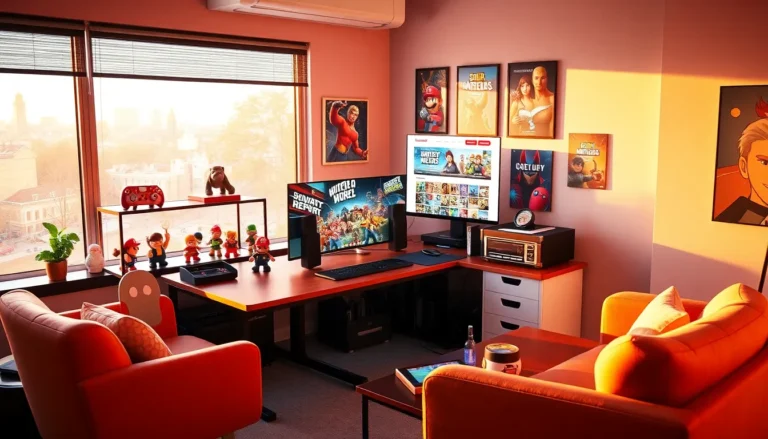Picture this: You’re staring at a blank page, feeling the pressure of crafting the perfect letter of motivation. It’s that crucial document that can tip the scales in your favor. But why stress over it? After all, a good letter can often be the key to unlocking doors to incredible opportunities. In this guide, we’ll dive deep into the art of writing a compelling letter of motivation, transforming it from a challenging job into an exhilarating journey toward your future. Get ready to roll up your sleeves, you’re about to learn how to make a lasting impression that stands out.
Understanding The Purpose Of A Letter Of Motivation

Every successful application package has a common thread, and that’s the letter of motivation. Unlike a resume, which lists qualifications and achievements, this letter is a chance to showcase personality, aspirations, and suitability. It paints a fuller picture of an applicant, bridging the gap between raw credentials and a compelling narrative. Essentially, it tells the story of why an individual is not just qualified but uniquely positioned for the opportunity at hand. Whether it’s for a university program, a job, or a volunteer position, the letter serves as a powerful tool to convey passion and commitment, qualities that can resonate deeply with selection committees.
Also, this letter allows applicants to express their motivations for pursuing their chosen path and reflect on past experiences that have shaped their ambitions. It’s this personal touch that can draw readers in and set candidates apart from the rest. The question remains: how can one harness this potential, ensuring their letter is as powerful as possible?
Key Components Of A Strong Letter Of Motivation
Crafting a standout letter of motivation requires thoughtful consideration of several key components. First and foremost, clarity and structure are essential. A strong introduction captivates the reader’s attention, clearly stating the opportunity being pursued and the applicant’s enthusiasm. Following this, the body paragraph should investigate into past experiences and achievements, linking them to the desired opportunity. An applicant’s journey often adds depth, providing personal anecdotes can make the narrative relatable.
Also, expressing specific motivations uniquely tied to the opportunity is crucial. Applicants should illustrate how the program or position aligns with their career goals. This alignment boosts credibility and showcases the applicant’s genuine interest. Finally, a confident conclusion reiterates enthusiasm and readiness to contribute positively, leaving the reader with a lasting impression.
Tips For Writing An Effective Letter Of Motivation
Writing an effective letter of motivation involves more than just following a template: it requires a personal touch. Here are some actionable tips to elevate the writing process:
- Be Authentic: Authenticity resonates. Writing in a genuine voice not only engages the reader but also makes the story more relatable.
- Research Thoroughly: Understanding the institution or company is critical. Tailoring the letter to reflect the organization’s values and goals shows genuine interest.
- Set the Right Tone: While professionalism is crucial, balancing it with a conversational tone can make the letter more approachable.
- Seek Feedback: Having a friend or mentor review the letter can provide invaluable perspectives. They can catch errors, refine language, and enhance the overall impact.
- Proofread: Typos and grammatical errors can undermine credibility. A meticulous proofreading process should never be skipped.
Common Mistakes To Avoid
Even the best intentions can lead to missteps while writing a letter of motivation. Here are some common pitfalls to avoid:
- Being Too Generic: A one-size-fits-all approach often comes off as impersonal. Each letter should cater to specific opportunities.
- Overloading with Information: While it’s tempting to share every detail, clarity and conciseness are critical. Focus on the most relevant experiences and achievements.
- Neglecting the Conclusion: A lackluster finish can diminish the impact of the entire letter. Ensure the conclusion reinforces enthusiasm and appreciation.
- Ignoring Word Count Guidelines: Many organizations provide specific length requirements. Adhering to these ensures that the letter is not only comprehensive but also respectful of the reader’s time.
Examples And Templates For Inspiration
Examples can be incredibly beneficial when drafting a personal letter of motivation. Here are a couple of illustrative templates:
University Application Example:
“Dear Admissions Committee,
I am writing to express my keen interest in the Psychology Master’s program at XYZ University. My undergraduate studies have not only equipped me with the necessary knowledge but also ignited a lifelong passion for understanding human behavior…”
Job Application Example:
“Dear [Hiring Manager’s Name],
I am excited to apply for the Marketing Coordinator position at [Company Name]. With a solid background in digital marketing and a deep appreciation for your company’s innovative approach, I believe I can contribute effectively to your team…”
These examples highlight structure, tone, and clarity, demonstrating how to weave personal narratives into professional aspirations.
Tailoring Your Letter To Different Opportunities
It’s crucial to tailor the letter of motivation to reflect various opportunities. For instance, academic programs often require a more scholarly tone, emphasizing research skills and academic achievements. On the other hand, job applications may focus on relevant work experience and soft skills.
Besides, demonstrating an understanding of the organization’s mission or values, whether it’s a non-profit, corporation, or academic institution, can significantly enhance a letter. By aligning personal values with the institution’s ethos, applicants can create a compelling narrative that resonates on multiple levels. Personalizing each letter not only reinforces commitment but also makes the applicant more memorable.






